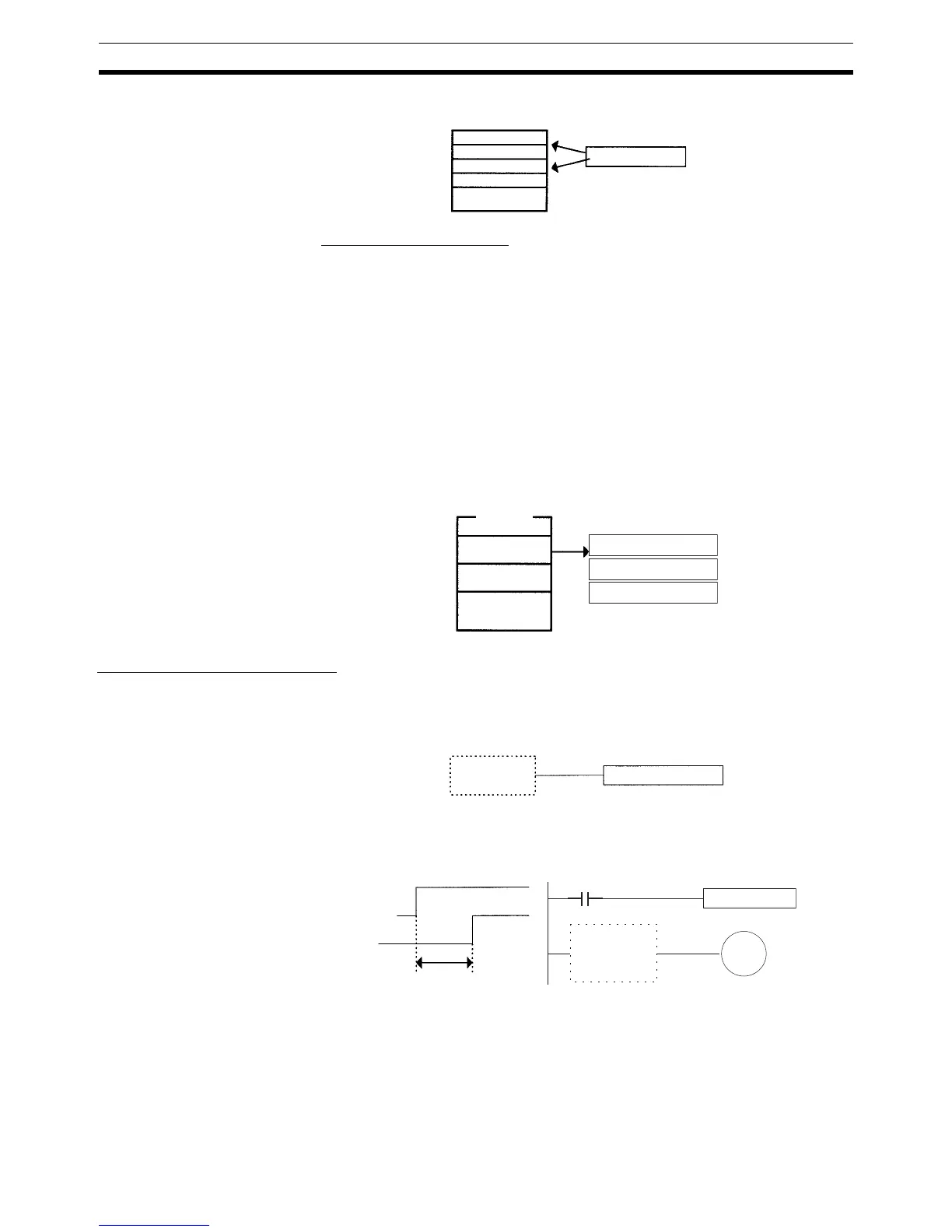10
CJ-series Features Section 1-2
Record-table Instructions
Record-table instructions operate on specially defined data tables. The record
table must be defined in advance with DIM(631), which declares the number
of words in a record and the number of records in the table. Up to 16 record
tables can be defined.
Record tables are useful when data is organized in records. As an example, if
temperatures, pressures, or other set values for various models have been
combined into a table, the record-table format makes it easy to store and read
the set values for each model.
The SETR(635) can be used to store the first address of the desired record in
an Index Register. Index Registers can then be used to simplify complicated
processes such as changing the order of records in the record table, search-
ing for data, or comparing data.
Troubleshooting Functions
Failure Diagnosis:
FAL(006) and FALS(007)
The FAL(006) and FALS(007) can be used to generate a non-fatal or fatal
error when the user-defined conditions are met. Records of these errors are
stored in the error log just like system-generated errors.
Failure Point Detection:
FPD(269)
Diagnoses a failure in an instruction block by monitoring the time between
execution of FPD(269) and execution of a diagnostic output and finding which
input is preventing an output from being turned ON.
Error Log Functions The error log contains the error code and time of occurrence for the most
recent 20 errors (user-defined or system-generated errors).
Maintenance Functions The CJ-series PLCs record information useful for maintenance, such as the
number of power interruptions and the total PLC ON time.
Data
Search, find maximum,
find minimum, etc.
Range specified
in the instruction
Record 2
Table
Record 3
Record 2
Set values for model A
Temperature setting
Pressure setting
Time setting
User-defined
error condition
FAL(006) or FALS(007) error
FPD
Input preventing
diagnostic output
from going ON

